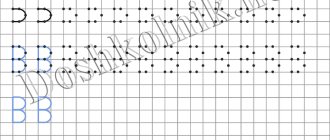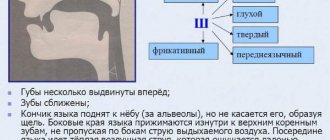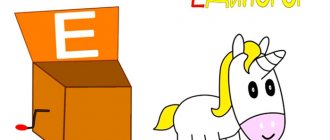Using tactile exercises
The child’s tactile sensations also need to be connected when learning the letter n. After all, these exercises activate the brain of a small person.
- Draw a symbol on the baby’s palm, ask the child to say its name – “en” with his eyes closed.
- Draw an “H” with your palms parallel to each other and your thumb placed perpendicular.
- Draw a symbol on a sheet of white paper with a finger dipped in watercolor paint or gouache.
- Make a letter from plasticine or salt dough and decorate the resulting figure.
- Draw the letter H with the crumbs' finger on the cereal, scattered in a thin layer on a horizontal surface.
And the last exercise
To consolidate the result, I suggest saying pairs of words with sounds | n | and | ŋ |. Remember everything you learned today. Go!
sin|sin| – sing |siŋ| thin |θɪn| – thing |θɪŋ| gone |ɡɒn| – gong |ɡɒŋ| ran |ræn| – rank |ræŋ| kin |kin| – king |kiŋ| win|win| – wing |wiŋ| tin |tɪn| – ting |tɪŋ| fan |fæn| – fang |fæŋ| ton |tʌn| – tongue |tʌŋ| ban |bæn| – bang |bæŋ|
Happened? Congratulations! Now all that remains is to learn the correct pronunciation of these sounds during fluent speech. The only way is practice, practice, practice. So we suggest you save our article and repeat the workshop periodically.
Tongue twisters with English sounds | n |
Let's complicate the task with tongue twisters. For convenience, the desired sound is highlighted in bold.
- N aughty N a n cy has n t the kn itting n eedles a n d kn otted N a nn y’s kn itting.
- N i n ety n ice n estlings n estle i n n i n e n ests, n i n e n ice n estlings n estled i n n i n ety n ests.
- N a nn y N a n cy n ever n aps at n ights at her n i n eteen, n a nn y N elly n id- n ods at n ights at her n i n ety.
Tongue twisters with English sounds | ŋ |
- U n cle Fra n k, bei n g an a n gry hu n ks, is di ng -do ng looki ng amo ng his belo ng i ng s for a di n ky ba n k of ha n ky-pa n ky , including ri ng s, ba n gles, ha ng ers, a n klets, and earri ng s.
- There is nothi ng like listeni ng to birds si ng i ng spri ng so ng s.
- The E n glish ki ng is goi ng to co n quer Hu n gary, The Hu n garian ki ng is goi ng to co n quer E n gland.
Nasal sound | n | in English
Pronounced in the words no, name, nib, etc. Yes, the Russian language also has its own | n|, and it seems identical. But that's not true. First, let's watch the video, and then discuss the details:
First difference: exactly the same as the sound | d |, which we dealt with earlier.
Russian sound | n | it is formed like this: you bring the front part of your tongue to the back of your teeth and gums, lowering the tip of your tongue down. This creates a barrier, the air has nowhere to escape - and it comes out through the nose.
In the same position you pronounce the sound | d |, only there the air still breaks through the barrier and a noisy sound is obtained, similar to an exhaust. Therefore, for a person with a runny nose, the word night can become the word daughter.
Now say the word night and feel where your tongue is located. This understanding will help you easily change the position to the desired one for the English sound.
The English sound is pronounced exactly according to the same principle: obstruction - air exits through the nose. But language creates a barrier in another place - in the same place as for the English sound | d|. Do you remember where exactly? That's right, at the alveoli (tubercles behind the teeth).
Say the word night again, but now press the tip of your tongue to the most convex part of the alveoli at a right angle. Happened?
You need to learn the correct pronunciation of even such a seemingly similar sound to Russian, not just because of tediousness or perfectionism. In a good way, to speak English, your entire articulatory apparatus must be “rebuilt,” and practicing each, even simple, sound will help in pronunciation of other, more complex ones.
Second difference: because of the different position of the tongue when you pronounce English | n |, the air stream passes through the nose more freely. Therefore, the English sound becomes more sonorous and prolonged - as if “more vowel”.
Due to this strong sonority, English | n | in some cases it can be syllabic, almost like a vowel. This happens in some words when | n | stands after sounds | t,d,s,z,g |, as in shouldn't (we pronounce it as "shudEnt").
The third difference: I repeat about it from article to article. English consonants do not soften before vowels like ours | and |. Therefore, in Russian ninja the sound | n | soft, and in English ninja - hard.
Got it? Now let's practice.






